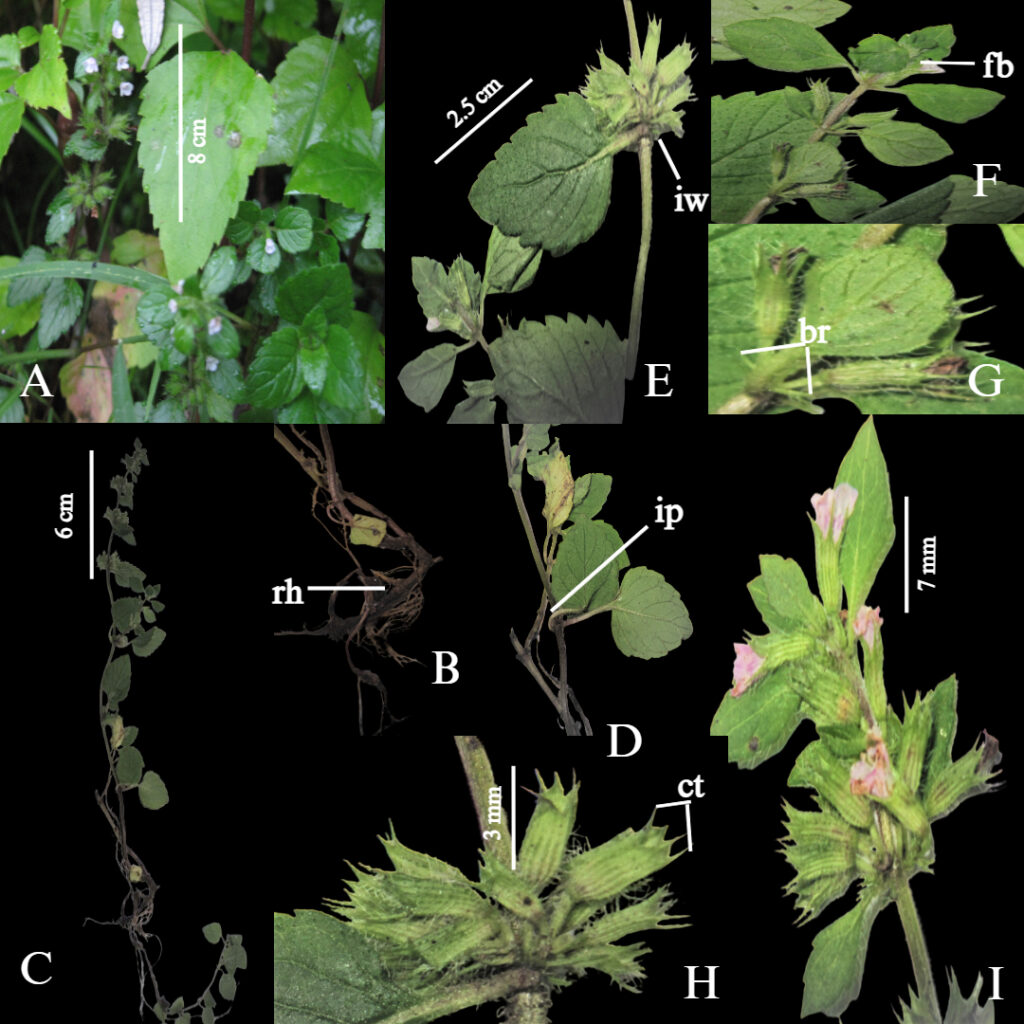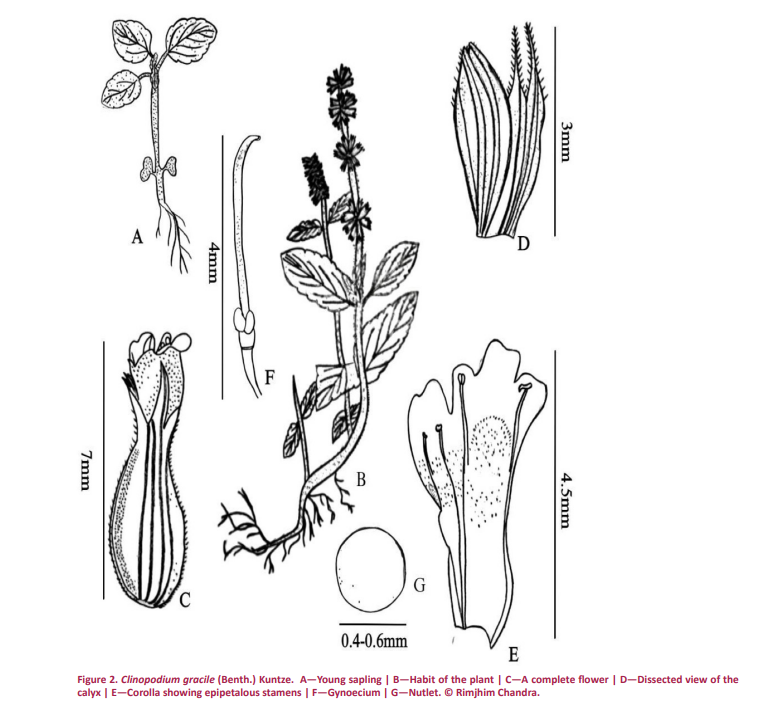The mint family Lamiaceae Martnov (also known as
Labiatae Juss.) has profound distributon, confning 232
accepted genera. According to Angiosperm Phylogeny
Group (APG IV), the genus `Clinopodium´ is bound
within the sub-family Nepetoideae (Dumorter) Luerssen
and tribe Mentheae Dumorter (Stevens 2001 onwards).
Clinopodium L. comprises about 20 species in Asia and
Europe (Li & Hedge 1994). In accordance with Plants of World
Online (POWO 2024), Clinopodium has nativity in tropical
and sub-tropical regions with 186 species. The genus is
commonly known as Calamint (Weakley 2010) due to
the inclusion of Calamintha Mill. members. Doroszenko
(1985) served Clinopodium as a section of Calamintha.
However, the later remains as a synonym for the former
genus due to the priority of Clinopodium (1753) over
Calamintha (1754). According to the database of POWO,
Clinopodium is native to India and portrayed by seven
species: Clinopodium capitellatum (Benth.) Kuntze, C.
gracile (Benth.) Kuntze, C. hydaspidis (Falc. ex Benth.)
Kuntze, C. javanicum (Blume) I.M.Turner, C. piperitum
(D.Don) Murata, C. umbrosum (M.Bieb.) K.Koch., and
C. vulgare L. The species `Clinopodium gracile´ is natve
to Asia (Weakley 2010). It can be allocated from China,
Indonesia, Japan, Jawa, Korea, Laos, Malaysia, Myanmar,
Taiwan, Thailand, Vietnam, and India (Arunachal
Pradesh, Assam, Manipur, Meghalaya, Mizoram,
Nagaland, Sikkim, & Tripura). It commonly flourishes
near river banks, wild/semi-wild areas, and alongside
forest margin sites (Li & Hedge 1994). In accord with
Cantno & Wagstaf (1998), the species is associated with
a morphologically diverse and taxonomically complex
group called the `clinopodioid complex´. The species
retain a 2n = 18 chromosomes number and distinct in
possessing one vascular bundle in its petiole (Hsieh &
Huang 1998).
Image 1. Clinopodium gracile (Benth.) Kuntze: A—Habit of the plant,

B—Stoloniferous root showing root hair (rh) | C—Whole plant revealing
its vegetatve and reproductve parts | D—Abaxial surface of leaf with leaf petole (lp) | E—Adaxial surface of leaf and inforescence whorl (iw)
| F—Young shoot displaying foral bud (f) | G—Base of pedicel manifestng bract (br) | H—Calyx portraying its tooth (ct) | I—Vertcillaster
inforescence exhibitng fower arrangement. © Rimjhim Chandra.

Link to the article: https://doi.org/10.11609/jott.8972.16.7.25617-25622
